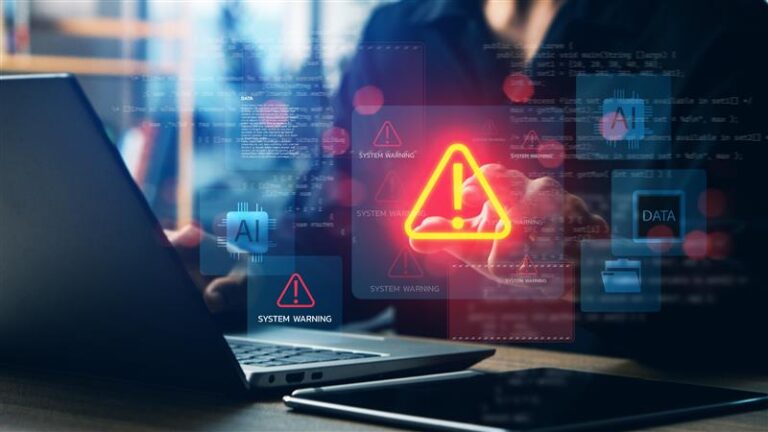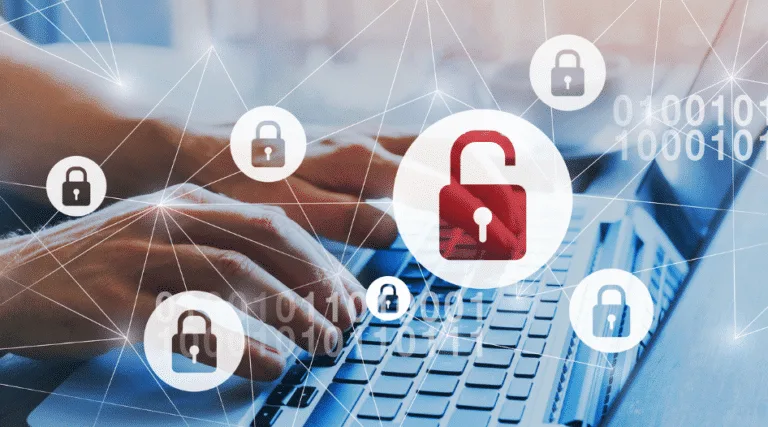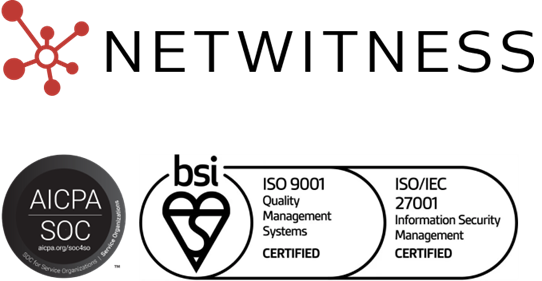It is 2025, and the cyber threat landscape is not just evolving – it’s expanding, fragmenting, and accelerating all at once requiring for more unified cybersecurity solution. Enterprises today face everything from advanced ransomware strains that move laterally across networks within minutes to stealthy supply chain attacks that stay hidden for months. Meanwhile, hybrid work models, sprawling cloud infrastructure, and IoT endpoints have blown up the traditional perimeter.
Yet, many security teams are still juggling isolated tools – an EDR platform here, a SIEM there, maybe a third-party threat intelligence feed tacked on top. Each tool might work well on its own, but collectively? They often leave blind spots and burn out teams with noise, duplication, and delays.
This is exactly where a unified cybersecurity solution steps in.
Let’s break it down.
What Is a Unified Cybersecurity Solution?
A unified cybersecurity solution integrates all core elements of your cyber defense – network monitoring, endpoint detection and response, threat intelligence, behavioral analytics, orchestration, and more – into a single, cohesive ecosystem.
It is not about having “everything in one platform” for the sake of it. It is about enabling visibility, speed, and strategic coordination across your environment.
Here’s what a unified solution typically connects:
- Network Detection and Response (NDR)
- Endpoint Detection and Response (EDR)
- Security Information and Event Management (SIEM)
- Threat Intelligence
- User Entity Data Analytics
- Security Orchestration, Automation, and Response (SOAR)
Rather than siloed logs, alerts, or forensic data, you get context-rich insights that can be acted on immediately, whether that’s shutting down an infected device or tracing lateral movement across cloud workloads.
Why It is a Strategic Imperative in 2025
1. Threats Are Faster. So Must Be Your Response:
According to a 2024 report, 83% of breaches involved external actors, and over 60% of attacks moved from initial access to lateral movement within hours. Speed matters.
A unified cybersecurity solution gives you cross-layer visibility, so your team is not wasting critical time jumping between dashboards or chasing false positives. You see the story of the attack, not just isolated clues.
2. Disjointed Tools Create Gaps and Fatigue:
Multiple point solutions often mean:
- Duplicate alerts from different sources.
- Inconsistent or incomplete data correlation.
- Analyst burnout due to alert fatigue.
- Missed context due to data silos.
Unified solutions reduce noise, connect the dots automatically, and let your analysts focus on real threats, not busy work.
3. AI and Behavioral Analytics Need Data Depth:
AI models and UEBA tools can detect subtle anomalies, but only if they have full visibility across user activity, endpoint behavior, and network traffic. Unified platforms are uniquely positioned to feed these models the complete picture.
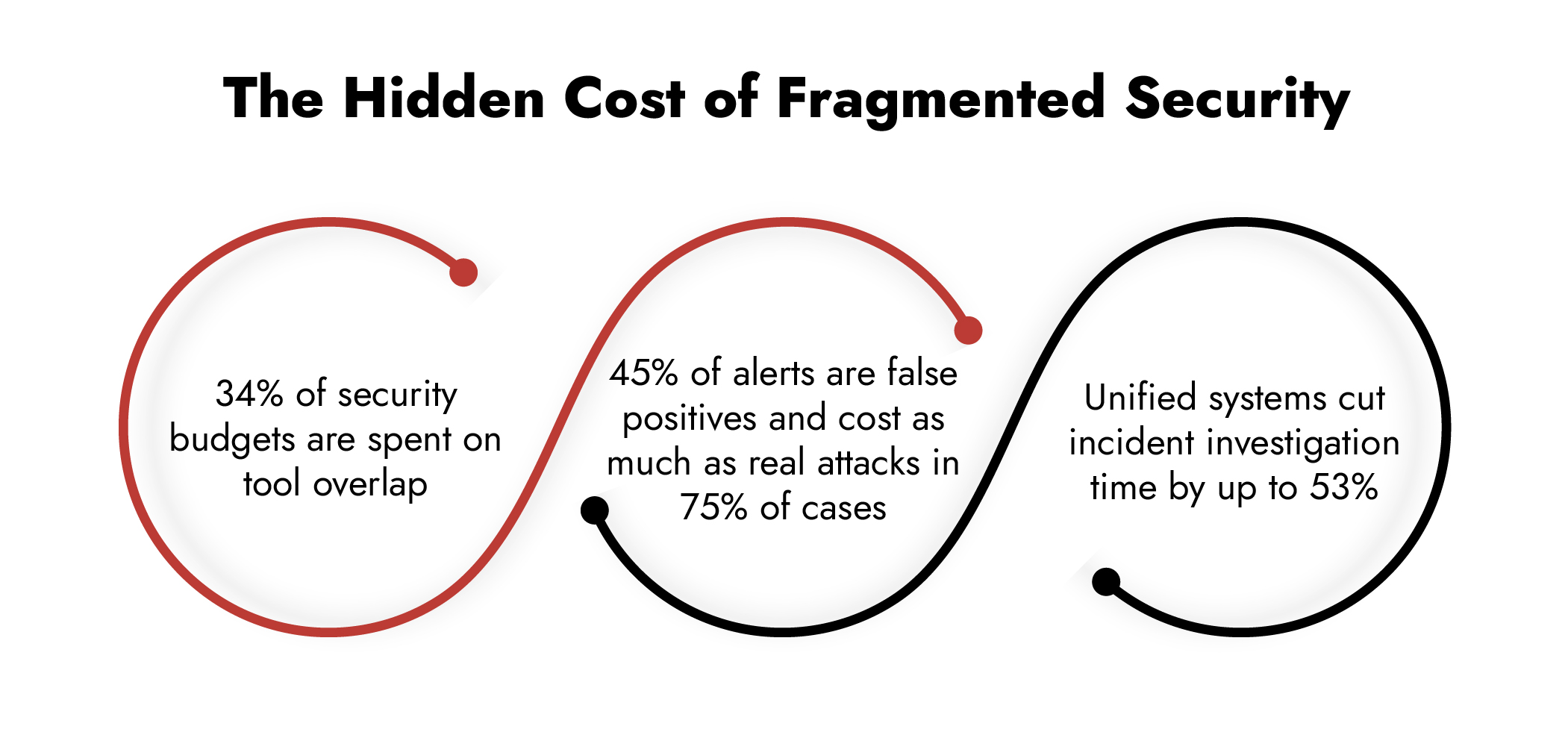
The Role of Managed Threat Detection and Response
Not every team has the bandwidth or in-house talent to manage, monitor, and fine-tune a unified stack 24/7. This is where managed threat detection and response (MTDR) services come in.
These unified cybersecurity solution services combine platform expertise with proactive threat hunting, continuous monitoring, and incident response support. They’re especially valuable for:
- Mid-size enterprises without a full SOC team.
- Large organizations dealing with hybrid environments.
- Teams struggling with alert fatigue and triage bottlenecks.

Where NetWitness Fits In
NetWitness is purpose-built for organizations that need deep visibility, fast response, and unified cybersecurity solution integration across all attack surfaces.
Rather than offering a generic “all-in-one” promise, NetWitness focuses on bringing advanced detection and response capabilities into a unified architecture that spans:
- Full-Packet Capture NDR: See what other platforms miss, down to the session level.
- Next-Gen EDR: Detect and isolate malicious behavior at the endpoint.
- SIEM + Behavioral Analytics: Combine logs with context and anomaly detection.
- SOAR Capabilities: Automate triage and response workflows to save precious analyst time.
- Global Threat Intelligence: EnrichEnrich alerts with contextual insights for faster decision-making.
Its flexible deployment (cloud, hybrid, on-prem) and integration-friendly design mean you don’t need to rip and replace existing infrastructure to adopt it.
NetWitness is not just another tool, it is the connective tissue your unified cybersecurity solution stack has been missing.
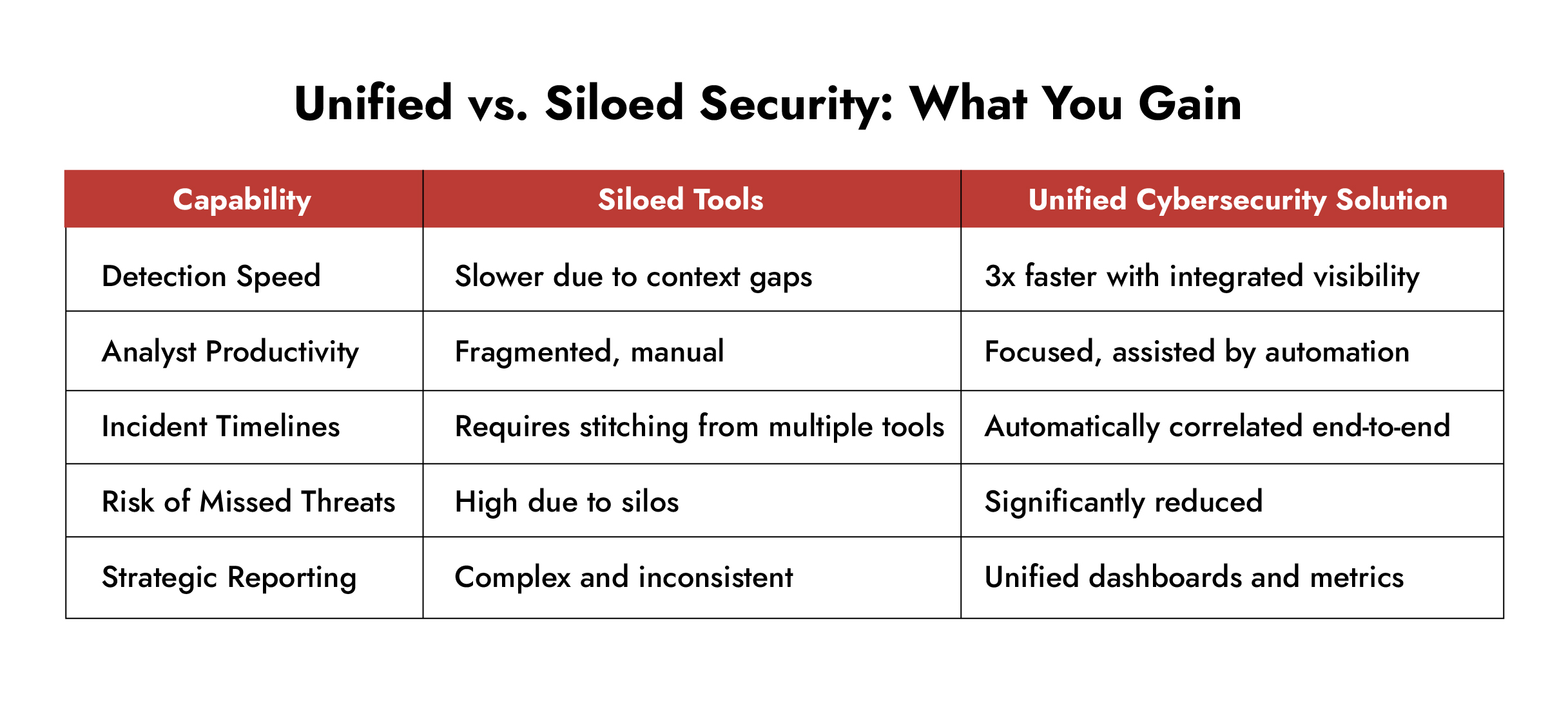
Final Thoughts
Cybersecurity in 2025 demands more than strong individual tools. It demands cohesion. As threats become faster, smarter, and more interconnected, your defenses need to follow suit.
Unified cybersecurity solution is not just a technical choice, it is a strategic one. It enables faster decision-making, stronger defenses, and more efficient teams. And CISOs facing mounting pressure from boards, regulators, and attackers alike, it is a chance for them to shift from reactive chaos to proactive control.
If your current setup feels like a patchwork of best-intentioned solutions, maybe it is time to start thinking more unified.
FAQs: Unified Cybersecurity for Enterprise Decision-Makers
Q1: How does a unified cybersecurity solution reduce incident response time?
By correlating data from endpoints, networks, and logs in one platform, unified systems eliminate the need to manually gather and piece together information during an incident. This shortens investigation timelines and allows for faster containment.
Q2: Can I adopt a unified solution without replacing my current tools?
Yes. Many platforms, including NetWitness, are designed to integrate with existing systems through APIs and connectors, allowing you to unify operations without a full overhaul.
Q3: What’s the difference between unified cybersecurity and managed detection and response?
A unified solution refers to integrated tools and technology stack. Managed threat detection and response (MDR or MTDR) refer to outsourced services that manage those tools and provide ongoing monitoring, hunting, and response support.
Q4: How does unified security improve compliance?
With centralized data and reporting, unified platforms simplify audit trials, policy enforcement, and regulatory documentation, making it easier to comply with standards like GDPR, HIPAA, and ISO 27001.
Q5: What industries benefit most from unified cybersecurity?
While any enterprise can benefit, it is especially valuable in finance, healthcare, manufacturing, and critical infrastructure – industries with complex environments and high regulatory stakes.


